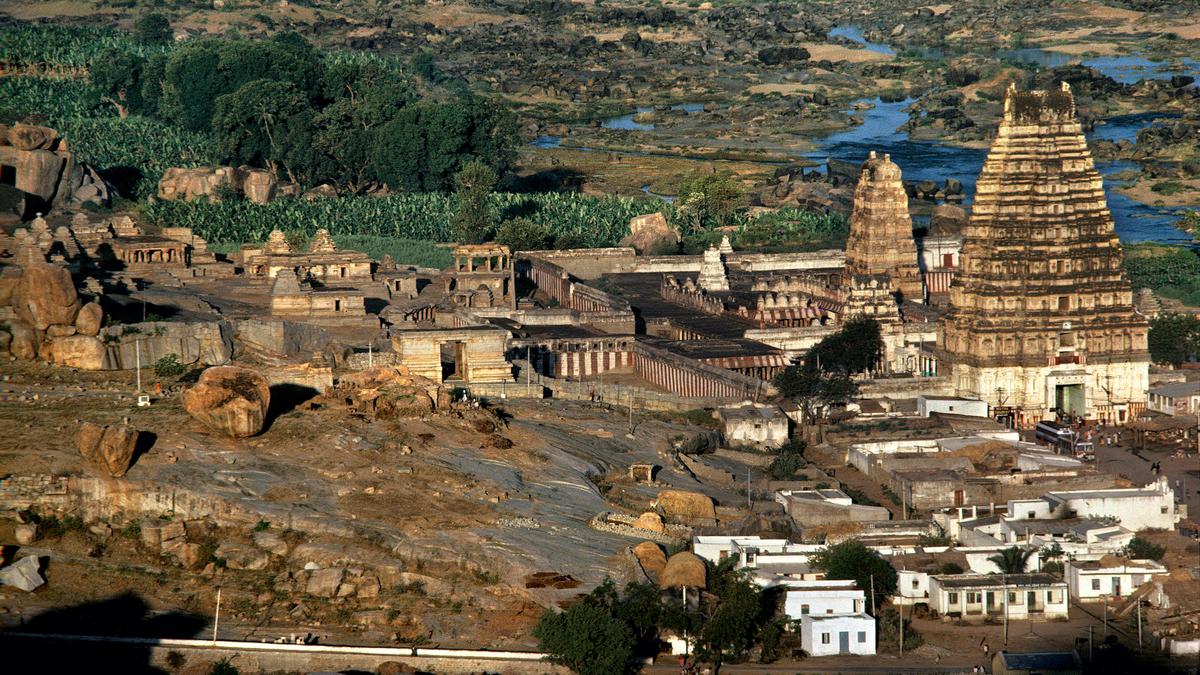
The Deccan has been underappreciated: George Michell
The Hindu
The leading authority on South Asian architecture on the allure of Deccan architecture, his commitment to guidebooks and what lies ahead for the Deccan Heritage Foundation
George Michell smiles when I bring up Victory City, Salman Rushdie’s marvellously irreverent novel about the mythical kingdom of Bisnaga. So, what does he think of Rushdie’s adroit retelling of the rise and fall of the Vijayanagara Empire? “It is fun…very wicked,” he says, pointing out that many of the characters who are part of the kingdom’s lore and history, including Krishna Deva Raya, the king, and Pampa, the goddess, are part of the book, albeit represented in a fantastical way.
One thing, however, is the unvarnished truth. “Vijayanagar means Victory City,” he says of this medieval imperial power, whose architecture he has been studying and documenting for over three decades. A name that appears to be more than justified, going by most narratives, including the first-person accounts of foreign travellers such as lbn Batuta, Domingo Paes and Fernao Nuniz. “It was one of the great Hindu empires in India,” agrees George, the co-founder of the Deccan Heritage Foundation, who was recently in the city to deliver a lecture on the city plan of Hampi, the erstwhile capital of the Vijayanagara empire at the Bangalore International Centre (BIC) in Domlur.
And though the city lies in ruins today, abandoned after being destroyed in 1565 after the Battle of Talikota, it is also a time capsule of sorts, teleporting a visitor straight into this lost world. “One reason to study the Hampi site is that it was left, unlike Delhi or Hyderabad, which were rebuilt after being destroyed,” he says. “Everything you see there was built before 1565 and hasn’t been altered in later times, which means it is an ideal place to study,” believes George.
The heritage of the Deccan
It must have been a nippy day in December 1970 when George, then 26, got off a train in Badami, once the capital of the Chalukyas, the classical Indian dynasty which ruled parts of the Deccan between the 6th and 12th centuries. “We got there and started to measure away at the temples there,” says the Australian-born, who had arrived there to study this ancient site as part of his PhD thesis.
Though trained as an architect, graduating with a Bachelor of Architecture degree from The University of Melbourne in 1968, he did not enjoy working as one, he says. Instead, he found himself getting interested in working with ancient Indian architecture. So, he left Melbourne and went to London to earn a PhD at the School of Oriental and African Studies (SOAS). “To do a PhD, you have to pick a topic, so I thought about the temples around Badami,” said George, who had first seen these temples when he had backpacked through India as a student a few years earlier. “That is how I began working in this part of the world,” he says.
Today, George is a leading authority on South Asian architecture and has written, co-authored and edited innumerable books about myriad sites of history and heritage in the country, including the Elephanta caves off the coast of Mumbai, Rajput palaces, the monuments and gardens of the Mughals and the temple towns of Tamil Nadu.





















 Run 3 Space | Play Space Running Game
Run 3 Space | Play Space Running Game Traffic Jam 3D | Online Racing Game
Traffic Jam 3D | Online Racing Game Duck Hunt | Play Old Classic Game
Duck Hunt | Play Old Classic Game











